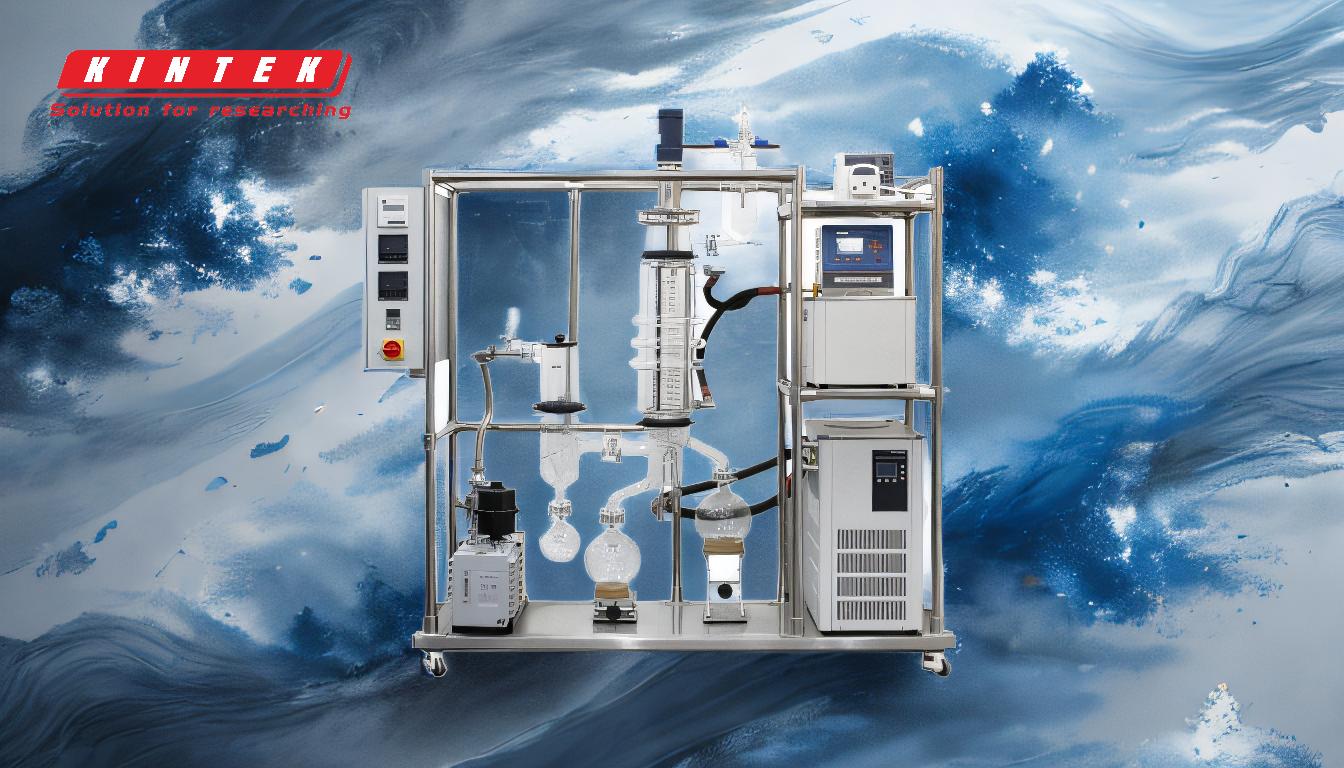Distillation separation, particularly molecular and short-path distillation, offers numerous advantages over conventional separation methods. These techniques are highly efficient, capable of handling heat-sensitive materials, and produce high-purity products with minimal waste. They operate at lower temperatures and shorter residence times, reducing thermal stress and degradation risks. Additionally, despite higher initial equipment costs, the long-term benefits such as reduced labor and maintenance costs, improved product quality, and system reliability make these methods cost-effective. These advantages make distillation separation an ideal choice for industries requiring precise and efficient separation of complex mixtures.
Key Points Explained:

-
High Separation Efficiency:
- Molecular distillation can accurately separate complex mixtures, even those with similar boiling points. This precision is crucial in industries where purity and specific compound isolation are required.
- The method ensures that the desired compounds are separated with minimal contamination, leading to higher product quality.
-
Low Operating Temperatures:
- Both molecular and short-path distillation operate at significantly lower temperatures compared to traditional methods. This is particularly beneficial for heat-sensitive substances, as it minimizes the risk of thermal degradation.
- Lower temperatures help preserve the integrity of delicate compounds, ensuring that they remain effective and unaltered during the separation process.
-
Minimal Thermal Stress and Short Residence Time:
- Short-path distillation features a very short residence time, often just tens of seconds, compared to hours in conventional methods. This rapid processing reduces the exposure of materials to heat, further protecting them from thermal stress.
- The minimal thermal stress ensures that the chemical structure and properties of the substances are maintained, which is critical for producing high-quality end products.
-
High-Purity Compounds:
- These distillation methods are highly effective in removing impurities and contaminants, resulting in high-purity compounds. This is essential for applications in pharmaceuticals, food processing, and chemical manufacturing where purity is paramount.
- The ability to produce high-purity products directly impacts the efficacy and safety of the final products, making these methods highly valuable.
-
Reduced Waste and High Yield:
- Molecular distillation not only produces high-purity compounds but also does so with minimal waste. This efficiency leads to higher yields of the desired product, making the process more economical and environmentally friendly.
- High yield and reduced waste contribute to sustainable practices, aligning with the growing demand for greener manufacturing processes.
-
Improved Product Quality and System Reliability:
- The advanced technology used in these distillation methods ensures consistent and reliable performance, leading to improved product quality over time.
- System reliability reduces downtime and maintenance needs, ensuring continuous production and consistent output quality.
-
Cost-Effectiveness in the Long Run:
- Although the initial investment in molecular and short-path distillation equipment is higher, the long-term benefits outweigh the costs. Reduced labor and maintenance expenses, coupled with high efficiency and product yield, make these methods economically viable.
- The cost-effectiveness is further enhanced by the ability to produce high-value, high-purity products that can command premium prices in the market.
In summary, distillation separation methods like molecular and short-path distillation offer significant advantages in terms of efficiency, product quality, and cost-effectiveness. These methods are particularly suited for industries that require precise separation of complex mixtures and the handling of heat-sensitive materials. The ability to operate at lower temperatures, produce high-purity compounds, and reduce waste makes these techniques invaluable in modern manufacturing and processing industries.
Summary Table:
| Advantage | Description |
|---|---|
| High Separation Efficiency | Accurately separates complex mixtures, even with similar boiling points. |
| Low Operating Temperatures | Minimizes thermal degradation, ideal for heat-sensitive materials. |
| Minimal Thermal Stress | Short residence time reduces heat exposure, preserving compound integrity. |
| High-Purity Compounds | Produces high-purity products, essential for pharmaceuticals and chemicals. |
| Reduced Waste and High Yield | Efficient process with minimal waste, promoting sustainability. |
| Improved Product Quality | Ensures consistent and reliable performance for superior product quality. |
| Cost-Effectiveness | Long-term savings from reduced labor, maintenance, and high product yield. |
Ready to enhance your separation process? Contact us today to learn more about molecular and short-path distillation solutions!









